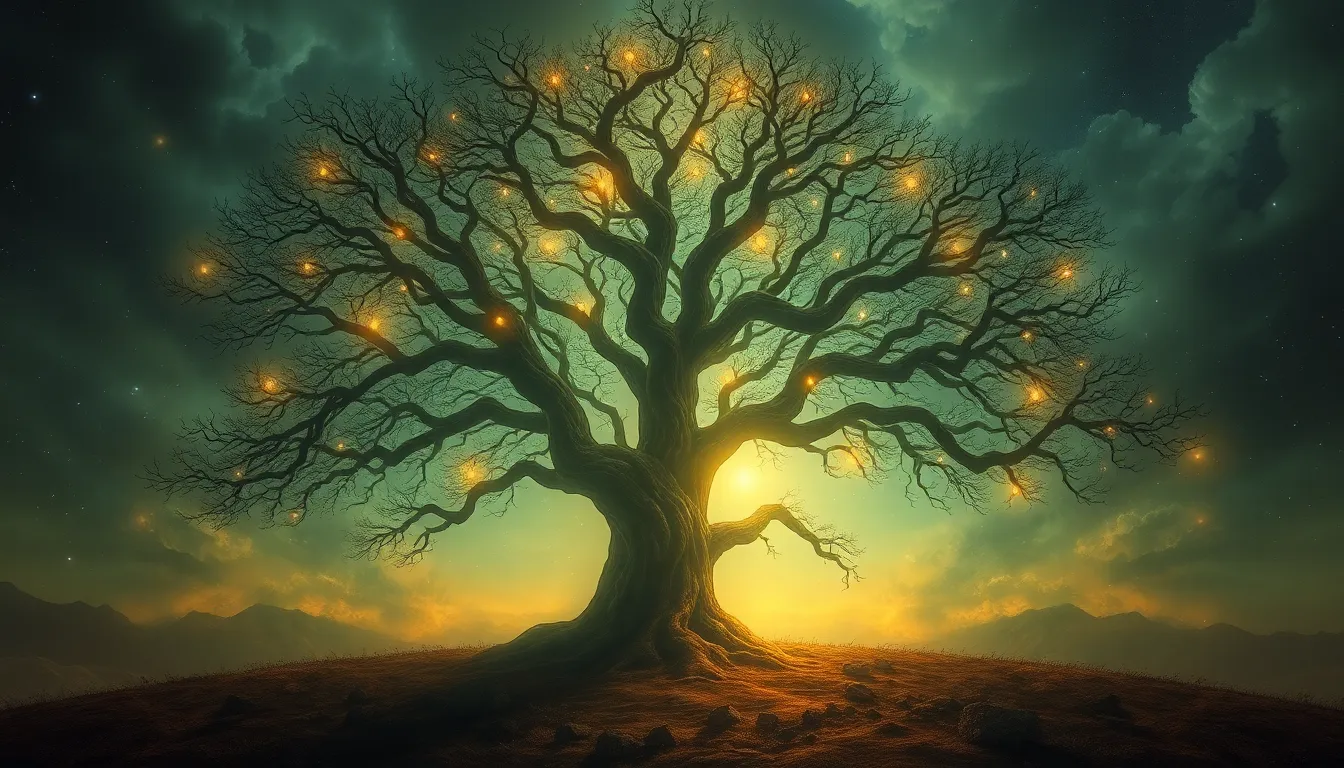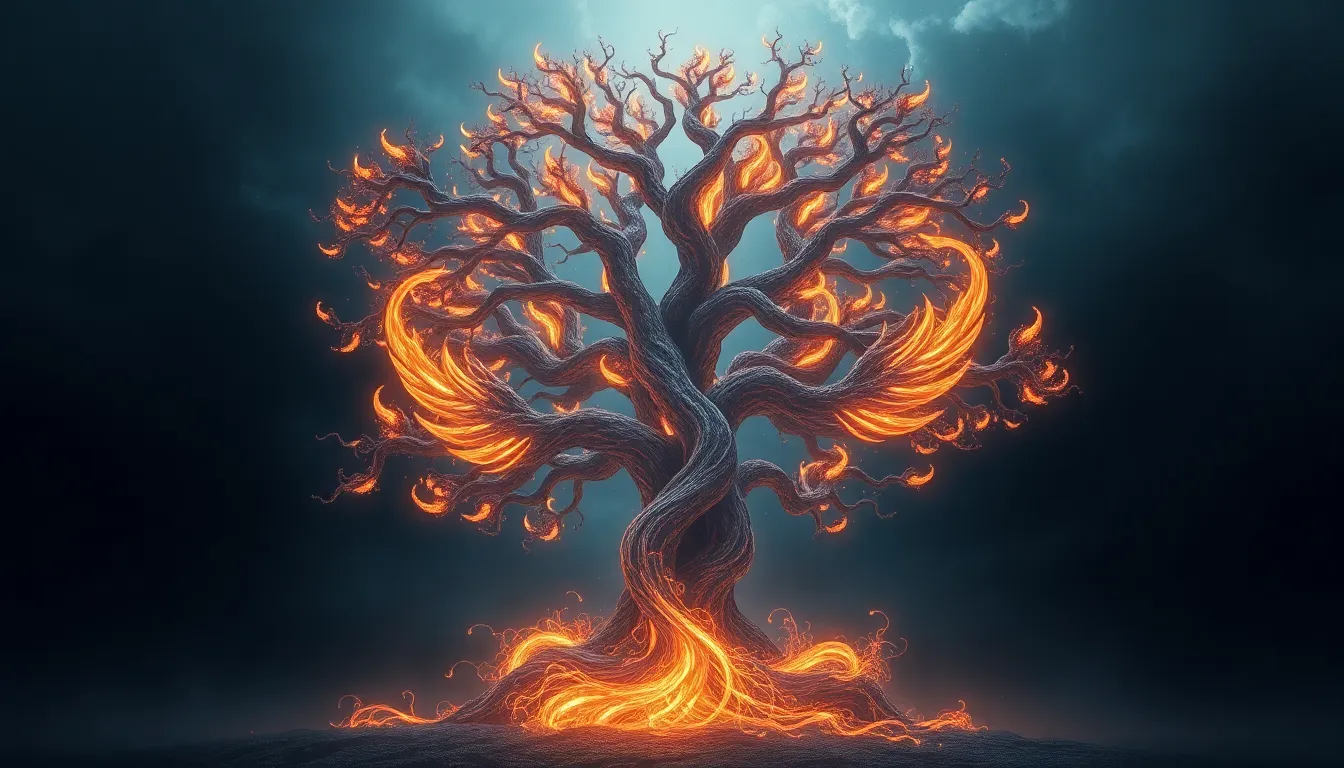The Tree of Echoes: Myths of Memory and Legacy
Introduction: The Symbolism of the Tree
The symbolism of the tree is a powerful motif that resonates across cultures and epochs. In mythology, trees often represent life, growth, and a connection between the earthly and the divine. They are seen as guardians of knowledge and memory, standing tall as witnesses to the passage of time and the unfolding of human stories.
In this context, echoes serve as a metaphor for memory and legacy. Just as a tree can spread its branches wide, so too can memories extend through generations, creating a tapestry of stories that inform our identities and shape our legacies.
The Historical Roots of the Tree in Mythology
Throughout history, trees have held a sacred place in various cultures. Ancient civilizations revered them as symbols of strength, endurance, and wisdom. For example:
- Norse Mythology: Yggdrasil, the World Tree, connects the nine realms and is a source of life and knowledge.
- Hindu Tradition: The Ashvattha, or sacred fig tree, is seen as a symbol of immortality and the cycle of life.
These examples illustrate how trees are woven into the fabric of mythology, serving as anchors for cultural beliefs and practices. Across different civilizations, tree myths often share common themes, including creation, interconnectedness, and the cycle of life and death.
Echoes of the Past: Memory in Myth
Memory plays a vital role in shaping cultural identity. Myths are not just stories; they are vessels for collective memory, preserving the values, beliefs, and experiences of a community. These narratives often emphasize the importance of remembering the past to understand the present and guide the future.
Some examples of myths that highlight the significance of memory include:
- The Greek myth of Mnemosyne, the goddess of memory, who gave birth to the Muses, representing the arts and sciences.
- The Aboriginal Dreamtime stories, which recount the creation of the world and emphasize the importance of ancestral knowledge.
These narratives serve to anchor communities in their histories, reinforcing shared identities through the act of remembrance.
Legacy and Its Transmission Across Generations
Legacy, within the context of myths, refers to the transmission of values, beliefs, and stories from one generation to the next. This transmission often occurs through oral traditions and storytelling, where myths are passed down, shaping the identities of successive generations.
Mechanisms for passing down legacies include:
- Oral Traditions: Stories told by elders serve to educate and instill values in younger generations.
- Rituals and Celebrations: Cultural practices often incorporate mythical narratives, reinforcing their significance.
- Art and Literature: Myths are captured and reinterpreted through various forms of artistic expression.
The Tree of Life: Connections to Family and Ancestry
The concept of the family tree serves as a poignant metaphor for legacy, illustrating how individuals are connected through ancestry and shared histories. Myths that emphasize familial connections often highlight the importance of honoring ancestors and recognizing one’s roots.
Examples of such myths include:
- The Maori concept of whakapapa, which emphasizes genealogy and the interconnectedness of all living things.
- The Biblical account of the genealogy of Jesus, which traces his lineage back to key figures in Jewish history.
These narratives reinforce the idea that understanding one’s ancestry is vital to forming a coherent identity and legacy.
The Dual Nature of Memory: Preservation vs. Distortion
While myths serve to preserve memories, they can also distort them over time. The retelling of stories may lead to changes in detail, emphasis, or interpretation, raising questions about the authenticity of collective memory.
Case studies of myths that have evolved across generations include:
- The Trojan War narratives, which have been altered and reinterpreted through various literary works, reflecting changing societal values.
- The evolution of folk tales, which adapt to fit contemporary contexts while retaining core messages.
This dual nature of memory underscores the complexity of how myths function as tools for both preservation and transformation.
Modern Interpretations of the Tree of Echoes
Contemporary culture continues to reinterpret ancient myths, often infusing them with modern sensibilities. The impact of technology has transformed how stories are shared and remembered, with digital storytelling becoming a prominent medium.
Examples of modern interpretations include:
- Graphic novels and films that retell traditional myths with a contemporary twist.
- Social media platforms that facilitate the sharing of personal stories and collective memories.
These modern expressions highlight the ongoing relevance of myths in shaping our understanding of memory and legacy.
The Role of Nature in Shaping Memory and Identity
Nature plays a crucial role in shaping cultural narratives and memories. The natural environment often serves as a backdrop for myths, influencing the stories that emerge from a particular landscape.
Examining the interplay between nature and memory in various myths reveals:
- The significance of specific landscapes, such as mountains or rivers, in shaping cultural identities.
- The ways in which natural events, like storms or droughts, are woven into myths as metaphors for human experiences.
Lessons from the Tree of Echoes: What Myths Teach Us
Mythological narratives offer key takeaways about memory, identity, and legacy. They remind us of the importance of remembering our past, honoring our ancestors, and understanding our place within a broader cultural tapestry.
Relevance of these lessons in today’s world includes:
- The need for cultural preservation in an increasingly globalized society.
- The importance of storytelling as a means of connecting with others and sharing experiences.
Conclusion: The Enduring Legacy of Myths in Our Lives
In summary, myths play a significant role in our understanding of memory and legacy. The Tree of Echoes symbolizes the interconnectedness of our stories, reminding us that the past continues to resonate in our present lives. As we navigate the complexities of modern existence, the enduring lessons of myths remain relevant, guiding us in our quest for identity and meaning.




